Two block AandB of mass mA=10kg and mA=20kg are place on rough horizontal surface . The blocks are connected with a string. If the coefficient of fraction between block A and ground is μA=0.9 and between block B and ground is μB=0.3 and the tension in the string in situation as shown in fig force 120Nand 100N start acting when the system is at rest?

Let as assume that the system moves towards left .Then as it is clear from FBD
Fdriving=120−10020N
fresisting=μANA+μBNB
=90+60+150N

As Fresisting>Fdriving therefore, it can be concuded that the system is stationary Now there may be two posibilities
The friction between both block and ground should be static
The friction between one block and between the after block and ground is limiting
If friction between both and ground static , the tension in string should be zero
The friction on block A,fA=120N
The friction on block B,fB=100N
But (fA)max=90N and (fB)max=60N
Hence the friction on both block cannot be static
Hence friction on one block is static and on block should be limiting
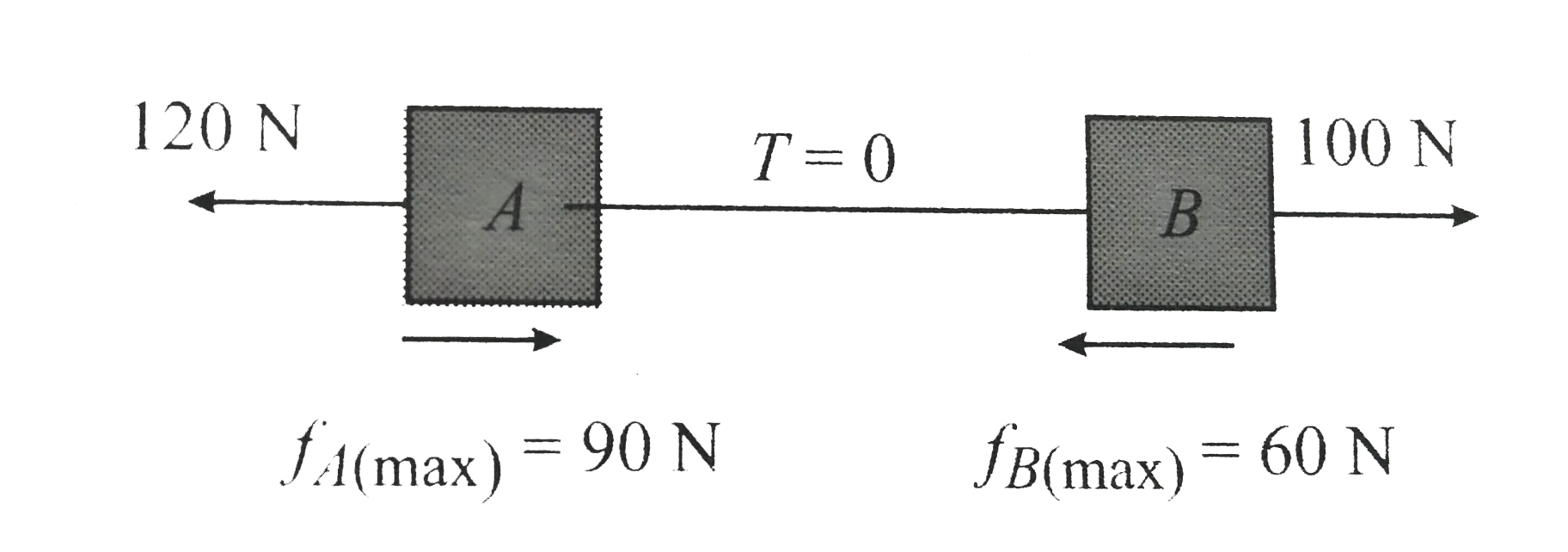
Assuming that the 10kg block reaches limiting friction first then using FBD's

If block A is at rest
120=T+90⇒T=30N
From FBND of B : T=f=100
∴30+f=100
Thenf=30Nwhich is not posible as the value is 60N for this surface of block

Therefore our assumption is wrong and now taking for 20kg surface to be limiting we have
from FBD of B
T+60=100⇒T=40N
From FBDof A
Also f+T=120⇒f=80N
This is acceprable as the static friction at this should be less than 90N
Hence the tension in the string is T=40N
Topper's Solved these Questions
- NEWTON'S LAWS OF MOTION 2BOOK - CENGAGE PHYSICS ENGLISHCHAPTER - NEWTON'S LAWS OF MOTION 2EXERCISE - Solved Examples
12 Videos
- NEWTON'S LAWS OF MOTION 2BOOK - CENGAGE PHYSICS ENGLISHCHAPTER - NEWTON'S LAWS OF MOTION 2EXERCISE - Exercise 7.1
25 Videos
- NEWTON'S LAWS OF MOTION 1BOOK - CENGAGE PHYSICS ENGLISHCHAPTER - NEWTON'S LAWS OF MOTION 1EXERCISE - Integer
5 Videos
- PROPERTIES OF SOLIDS AND FLUIDSBOOK - CENGAGE PHYSICS ENGLISHCHAPTER - PROPERTIES OF SOLIDS AND FLUIDSEXERCISE - INTEGER_TYPE
2 Videos
Similar Questions
In the figure shown coefficient of friction between block A and ground is 0.4 and that between wedge and block B is zero. Wedge is fixed. Find tension is string and acceleration of block A if F = 28 N.
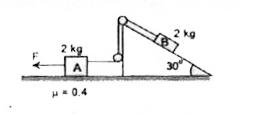
View SolutionIn the diagram shown coefficient of friction between 2 kg block and 4 kg block is μ=0.1 and between 4 kg and ground is μ=0.2 then answer the following quwstions .(tis time)
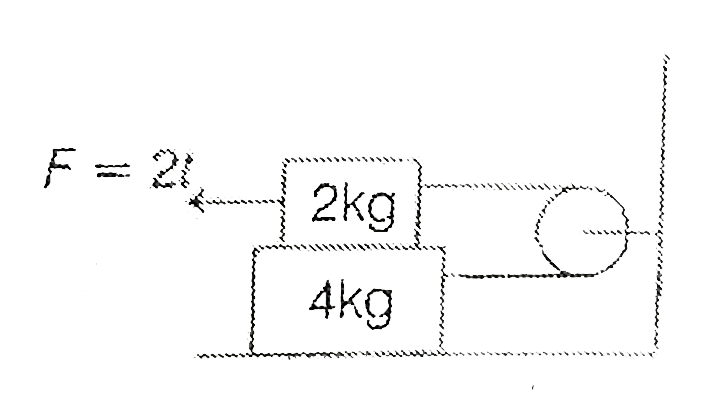
Force of friction on 2 kg block at t=12 s will be
View SolutionBlock A and B of masses 5 kg and 10 kg are placed as shown in figure. If block A is pulled with 50 N. Find out acceleration of the A and B. If coefficient of friction between A and B is 0.5 and between B and ground is 0.4.

View SolutionThe block of mass M and are arrenged as the situation in fig is shown.The coefficient of friction between two block is μand that between the bigger block and the ground is μ find the acceleration of the block .
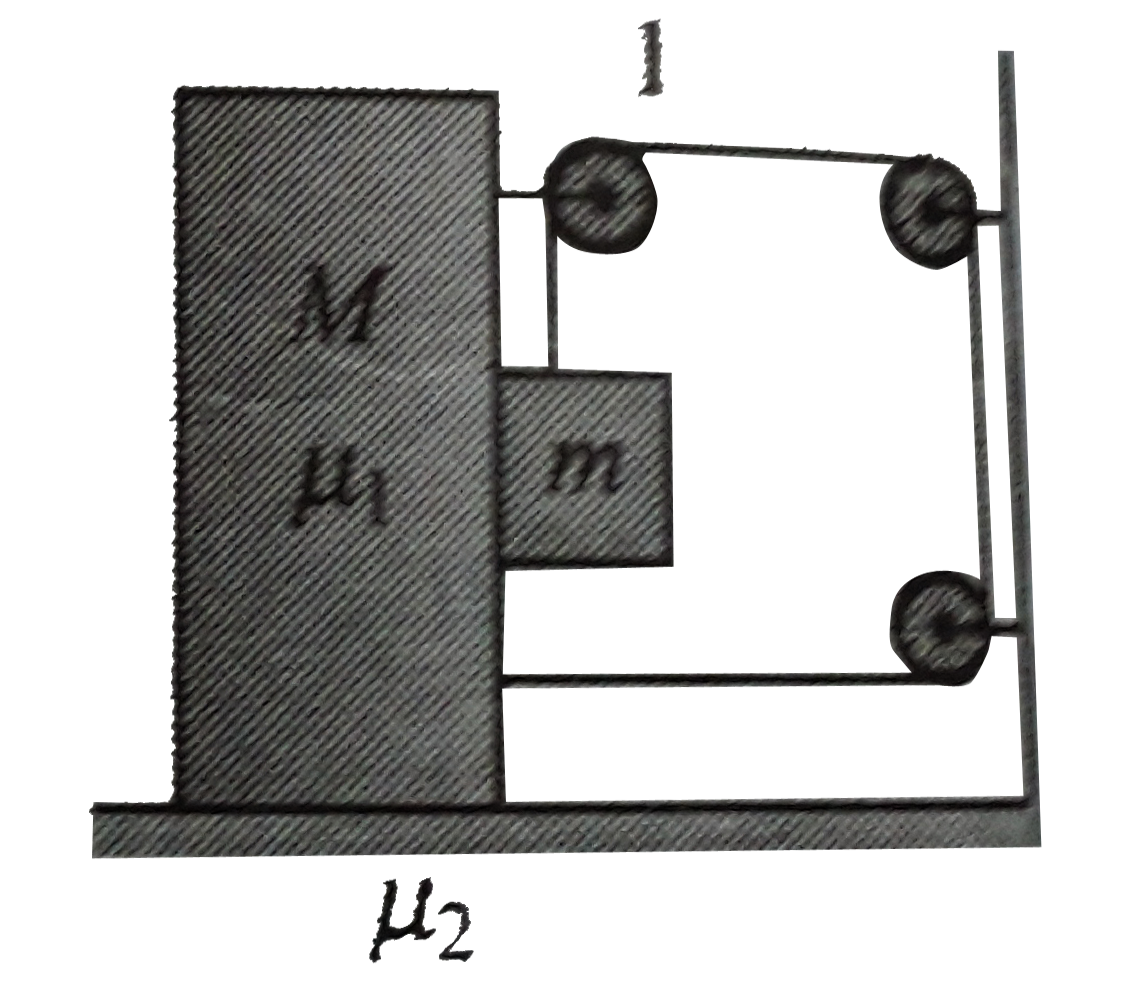
View SolutionIn the diagram shown coefficient of friction between 2 kg block and 4 kg block is μ=0.1 and between 4 kg and ground is μ=0.2 then answer the following quwstions .(tis time)
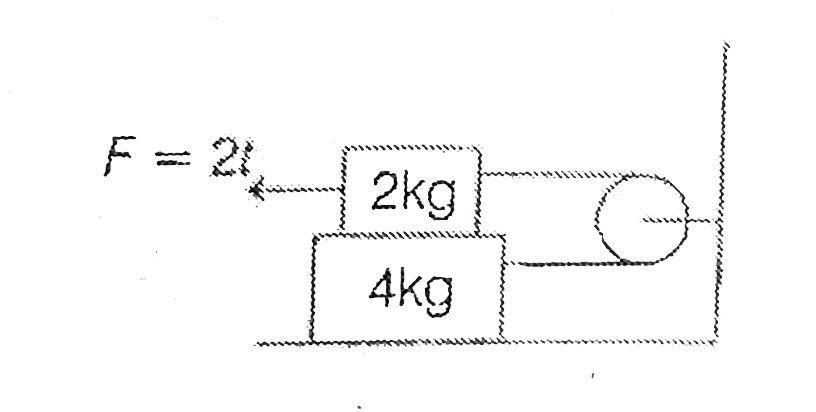
At t=4 s, the friction between 4 kg block and ground will be
View SolutionIn the diagram shown coefficient of friction between 2 kg block and 4 kg block is μ=0.1 and between 4 kg and ground is μ=0.2 then answer the following quwstions .(tis time)
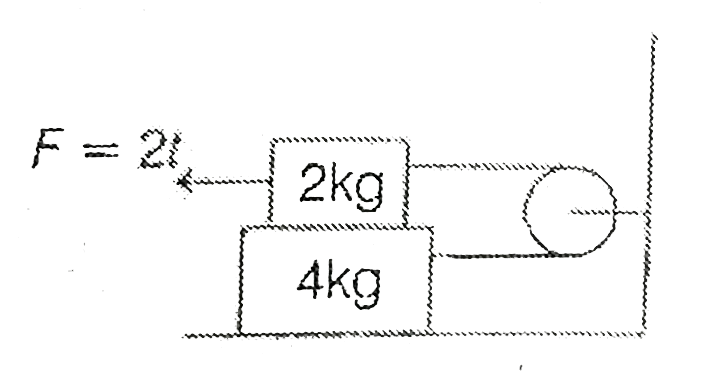
The graph of frication force acting on 4 kg block and ground as a function of time
View SolutionTwo blocks A and B having masses 100 kg and 200 kg are placed as shown in the figure. The block A is connected to a wall with a light inextensible string. The coefficient of friction between the blocks is 0.3 and that between the block B and the floor is 0.03. Then the minimum force required to move the block B will be (take g=10m/s2)
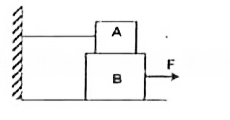
View SolutionBlocks A and B of masses 5 kg and 10kg are placed as shown in figure. If block A is pulled with 50 N. Find out acceleration of the A and B. if coefficient of friction between A and B is 0.5and between B and ground is 0.4.
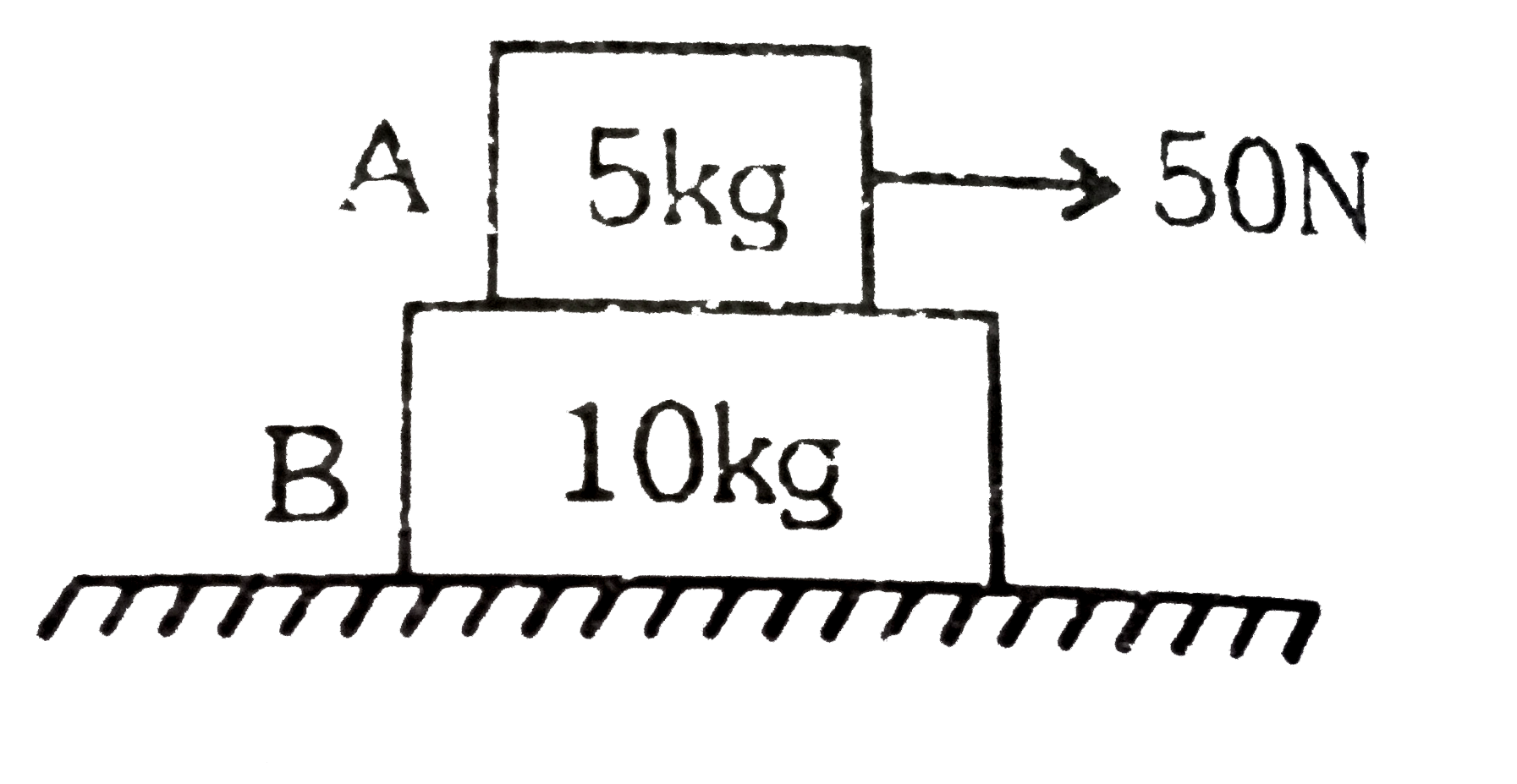
View SolutionA block is kept on a rough horizontal surface as shown. Its mass is 2 kg and coefficient of friction between block and surface (μ)=0.5. A horizontal force F is acting on the block. When

View SolutionTwo blocks M and m are arranged as shown in the diagram The coefficient of friction between the block is μ1=0.25 and between the ground and M is μ2=13 If M=8kg then find the value of m so that the system will remain at rest
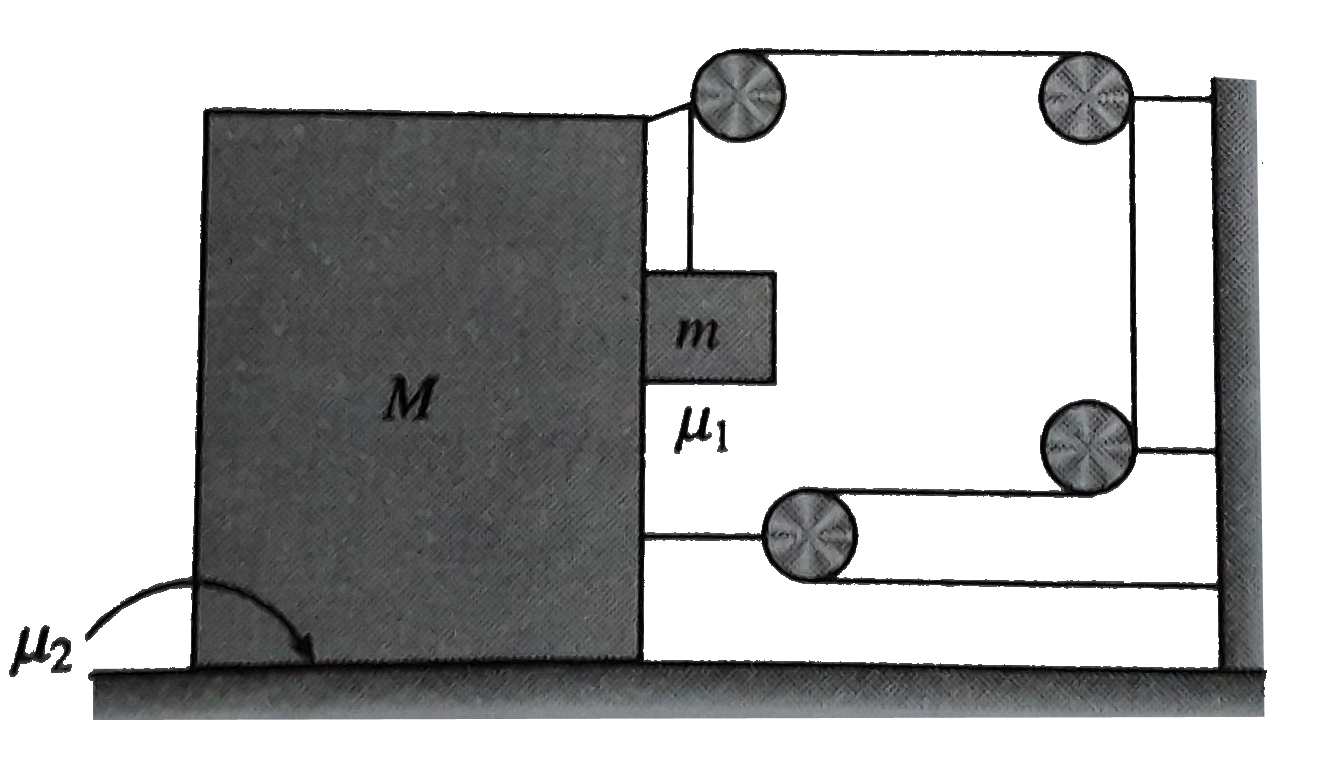
View Solution
